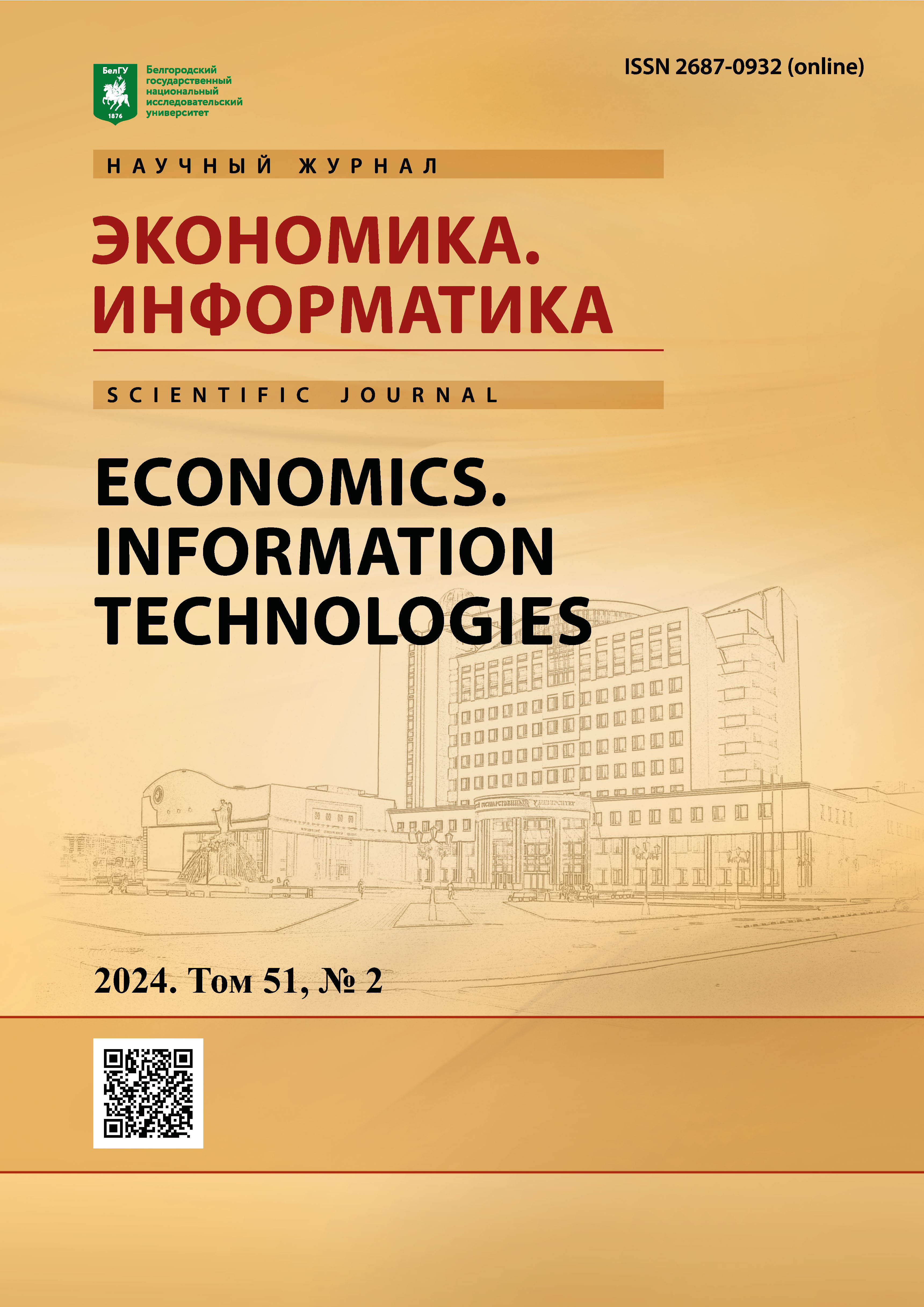Methodology for Assessing Balanced Spatial Development of the Region
DOI:
https://doi.org/10.52575/2687-0932-2024-51-2-296-308Keywords:
spatial development, balanced development, proportionality, regionAbstract
As a result of the increasing importance of each constituent entity of the Russian Federation in improving the efficiency of socio-economic development of the country's economy, there has been an actualisation of scientific research in the field of balanced development of territories. The growth of interregional inequalities in socio-economic development gives rise to a variety of structural and parametric contradictions, which requires analyzing the interrelationships of the main indicators of socio-economic development of regions, identifying the causes of inequalities, tracking the trends of integration and disintegration processes. The purpose of this study is to examine the existing approaches and indicators, as well as to develop a methodology for assessing the balanced spatial development of the region. In the course of the study the author analyzed the balanced spatial development of the regions of the Central Federal District on the basis of the application of standardized values of indicators in three blocks: economic development, social development and environmental development; a matrix reflecting the degree of proportionality of the region's development was constructed.
Acknowledgements: the research was carried out within the framework of the state assignment of National Research University «BelSU» FZWG-2023-0014, the topic of the project «Spatial and network interaction of Russian regions in the context of new challenges of technological development».
Downloads
References
Список источников
Регионы России. Социально-экономические показатели. 2023: Стат. сб. / Росстат. - М., 2023. 1126 с. URL: https://rosstat.gov.ru/storage/mediabank/Region_Pokaz_2023.pdf (дата обращения 23.04.2024 г.)
Список литературы
Атаева А.Г., Аслаева С.Ш. 2022. Методика определения пространственных каркасов региона и их сбалансированности. Вестник Удмуртского университета. Серия «Экономика и право», 2: 203-208.
Бабкова Э.Г., Панахов А.У. 2018. Рейтинговая оценка сбалансированного развития регионов Центрального федерального округа. Научный журнал НИУ ИТМО. Серия: Экономика и экологический менеджмент, 2: 19-27.
Барабаш Д.А. 2014. Комплексный подход для оценки сбалансированности регионального развития. Научно-технические ведомости Санкт-Петербургского государственного политехнического университета. Экономические науки, 1 (187): 42-53.
Бойцов А.Н. 2021. Оценка эффективности региональной социально-экономической политики на принципах социо-эколого-экономической сбалансированности. Фундаментальные исследования, 12: 68-73.
Гайнанов Д.А., Гатауллин Р.Ф., Атаева А.Г. 2021. Методологический подход и инструментарий обеспечения сбалансированного пространственного развития региона. Экономические и социальные перемены: факты, тенденции, прогноз, 14, 2: 75-91.
Мамлеева Э.Р., Сазыкина М.Ю., Трофимова Н.В. 2019. Методика оценки сбалансированности муниципального образования. Вестник Евразийской науки, 11, 6, URL: https://esj.today/PDF/72ECVN619.pdf (дата обращения 23.04.2024 г.)
Растворцева С.Н., Манаева И.В. 2020. Закон Ципфа в городах России. Анализ новых показателей. Экономика региона, 3: 935-947
Сульдина Г.А., Хамидулина А.М. 2012. Оценка сбалансированности социально- экономического развития муниципальных образований в регионе. Вопросы экономики и права, 44: 111-115.
Садыков А.И. 2022. Методика оценки сбалансированного социально-экономического развития региона. Экономические науки, 216: 153-158.
Ускова Т.В., Патракова С.С. 2024. Сбалансированность регионального экономического пространства по линии «город – село». Проблемы прогнозирования, 1(202): 196-207.
Abstract views: 517
Share
Published
How to Cite
Issue
Section
Copyright (c) 2024 Economics. Information Technologies

This work is licensed under a Creative Commons Attribution 4.0 International License.


